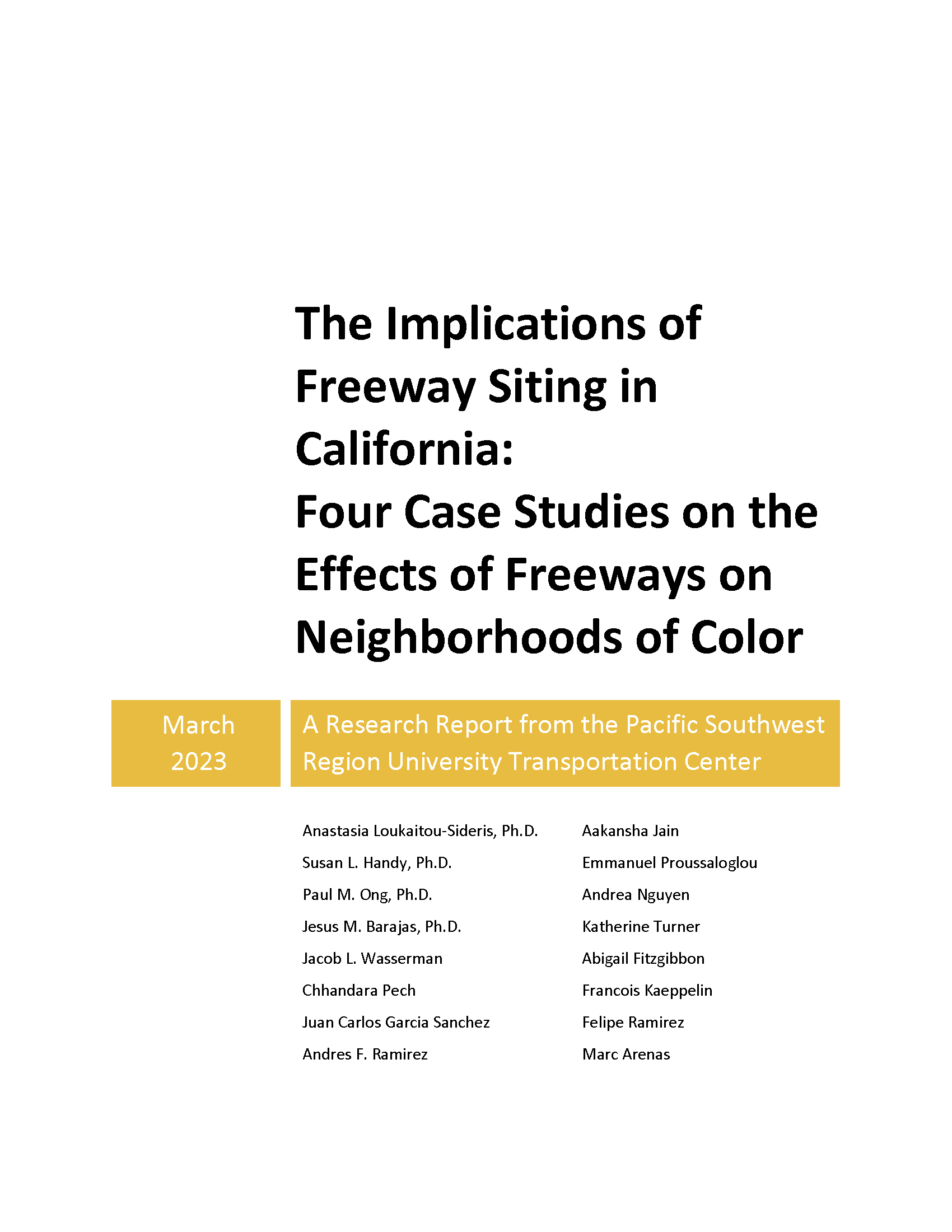Date: March 3, 2023
Author(s): Anastasia Loukaitou-Sideris, Susan L. Handy, Paul M. Ong, Jesus M. Barajas, Jacob L. Wasserman, Chhandara Pech, Juan Carlos Garcia Sanchez, Andres F. Ramirez, Aakansha Jain, Emmanuel Proussaloglou, Andrea Nguyen, Katherine Turner, Abigail Fitzgibbon, Francois Kaeppelin, Felipe Ramirez, Marc Arenas
Abstract
California’s freeways have come under increasing scrutiny for their disproportionately adverse impacts on low-income populations and populations of color. This study uses empirical research to not only understand but also quantify and describe in detail the historical impacts of freeways on communities of color in four California cities and areas: Pasadena, Pacoima, Sacramento, and San José. In these neighborhoods, freeways displaced many residents, significantly harmed those that remained, and left communities divided and depleted. The four cases differ in notable ways, but they share a disproportionate impact of freeway construction on communities of color. In Pasadena and Pacoima, decision-makers chose routes that displaced a greater share of households of color than proposed alternatives.
Demolition and displacement were the most visible and immediate effects of the freeways, but toxic pollution, noise, economic decline, and stigmatization remained long after. In suburban areas, white, affluent interests often succeeded in pushing freeways to more powerless neighborhoods. Massive roadway construction complemented other destructive governmental actions such as urban renewal and redlining. Freeways and suburbanization were key components in the creation of a spatial mismatch between jobs and housing for people of color, with few transportation options to overcome it. Understanding the history of racism in freeway development can inform restorative justice in these areas.
About the Project
California’s freeways have come under increasing scrutiny for their disproportionately adverse impacts on low-income populations and populations of color. This project uses empirical research to not only understand but also quantify and describe in detail the historical impacts of freeways on communities of color in four California cities and areas: Pasadena, Pacoima, Sacramento, and San José. In these neighborhoods, freeways displaced many residents, significantly harmed those that remained, and left communities divided and depleted. The four cases differ in notable ways, but they share a disproportionate impact of freeway construction on communities of color. In Pasadena and Pacoima, decision-makers chose routes that displaced a greater share of households of color than proposed alternatives. Demolition and displacement were the most visible and immediate effects of the freeways, but toxic pollution, noise, economic decline, and stigmatization remained long after. In suburban areas, white, affluent interests often succeeded in pushing freeways to more powerless neighborhoods. Massive roadway construction complemented other destructive governmental actions such as urban renewal and redlining. Freeways and suburbanization were key components in the creation of a spatial mismatch between jobs and housing for people of color, with few transportation options to overcome it. Understanding the history of racism in freeway development can inform restorative justice in these areas.



[…] compiled findings into a report, accompanied by a policy brief, interactive online storymaps sites, and a journal article, to […]